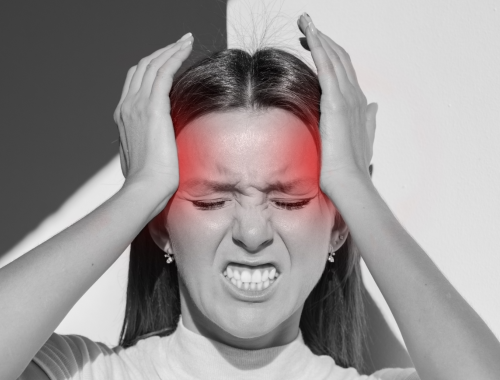Difference Between Paroxysmal Hemicrania and Cluster Headache
Paroxysmal hemicrania is a debilitating headache that comes in bouts, involves only one side of the cranium, and affects the area around the eye. A cluster headache is a severe unilateral headache that can occur up to 8 times per day and go into remission for weeks to months before appearing again.

What is paroxysmal hemicrania?
Definition:
Paroxysmal hemicrania is a debilitating headache that comes in bouts, involves only one side of the cranium, and affects the area around the eye.
Causes:
The exact cause of paroxysmal hemicrania is not known. Common triggers associated with the condition are stress, alcohol intake, increased pressure on the neck, and abrupt head movements.
Symptoms:
Paroxysmal hemicrania pain manifests as a sharp, stabbing, burning, throbbing headache that is unilateral, around the eye, or involving the temporal region and less commonly in the occipital region. Autonomic symptoms include rhinorrhea, facial plethora, drooping or swollen eyelids, facial sweating, aural fullness, photophobia, and nausea.
Diagnosis:
Paroxysmal hemicrania mimics other headache-causing conditions. The diagnosis requires fulfillment of the criteria according to the International Classification of headache disorders: these include severe headache near the eye for 2-30 minutes, at least one autonomic symptom present, at least 20 such attacks, five attacks per day, and complete prevention of the attacks by indomethacin administration.
Treatment:
Complete resolution of paroxysmal hemicrania is seen with indomethacin administration. The starting dose is 25mg thrice a day for adults and 2mg/kg twice a day for less than 14 years old.

What is a cluster headache?
Definition:
A cluster headache is a severe unilateral headache that can occur up to 8 times per day and go into remission for weeks to months before appearing again. It usually affects men between 20 to 40 years old.
Causes:
The exact cause of cluster headache is not known however it is linked with trigeminal nerve dysfunction as the first part of the nerve is affected causing one sided headache and lacrimation of the same eye.
Symptoms:
Symptoms of cluster headache are a severe burning, throbbing unilateral headache that lasts for 15 minutes up to 3 hours. Other symptoms are unilateral watery eyes, nasal congestion, and flushing of the same side of the face.
Diagnosis:
History and physical examination are initially done to identify cluster headaches. CT scan and MRI scan may be ordered to identify the cause of the condition.
Treatment:
Treatment options for cluster headaches are high-flow oxygen therapy, subcutaneous or nasal sumatriptan, and preventive medicines like Calcium channel blockers.
Difference between paroxysmal hemicrania and cluster headache
Definition:
Paroxysmal hemicrania is a debilitating headache that comes in bouts, involves only one side of the cranium, and affects the area around the eye. A cluster headache is a severe unilateral headache that can occur up to 8 times per day and go into remission for weeks to months before appearing again. It usually affects men between 20 to 40 years old.
Causes:
The exact cause of paroxysmal hemicrania is not known. Common triggers associated with the condition are stress, alcohol intake, increased pressure on the neck, and abrupt head movements. The exact cause of cluster headache is not known however it is linked with trigeminal nerve dysfunction as the first part of the nerve is affected causing one sided headache and lacrimation of the same eye.
Symptoms:
Paroxysmal hemicrania pain manifests as a sharp, stabbing, burning, throbbing headache that is unilateral, around the eye, or involving the temporal region and less commonly in the occipital region. Autonomic symptoms include rhinorrhea, facial plethora, drooping or swollen eyelids, facial sweating, aural fullness, photophobia, and nausea. Symptoms of cluster headache are a severe burning, throbbing unilateral headache that lasts for 15 minutes up to 3 hours. Other symptoms are unilateral watery eyes, nasal congestion, and flushing of the same side of the face.
Diagnosis:
Paroxysmal hemicrania mimics other headache-causing conditions. The diagnosis requires fulfillment of the criteria according to the International Classification of headache disorders: these include severe headache near the eye for 2-30 minutes, at least one autonomic symptom present, at least 20 such attacks, five attacks per day, and complete prevention of the attacks by indomethacin administration.
History and physical examination are initially done to identify cluster headaches. CT scan and MRI scan may be ordered to identify the cause of the condition.
Treatment:
Complete resolution of paroxysmal hemicrania is seen with indomethacin administration. The starting dose is 25mg thrice a day for adults and 2mg/kg twice a day for less than 14 years old. Treatment options for cluster headaches are high-flow oxygen therapy, subcutaneous or nasal sumatriptan, and preventive medicines like Calcium channel blockers.
Table of differences between paroxysmal hemicrania and cluster headache

FAQs
What is the difference between cluster headaches and hemicrania continua?
A cluster headache is a severe unilateral headache that can occur up to 8 times per day and go into remission for weeks to months before appearing again. Hemicrania continua is a constant severe headache in the half side of the head.
What is the difference between headache and hemicrania?
Headache is simply a pain in the head, whereas hemicrania is a pain in half of the head.
What can be mistaken for cluster headaches?
Sinusitis and migraine.
What is primary paroxysmal hemicrania a type of cluster headache?
It is a variant of cluster headache in which there is a debilitating headache that comes in bouts, involves only one side of the cranium, and affects the area around the eye.
What triggers paroxysmal hemicrania?
Common triggers associated with the condition are stress, alcohol intake, increased pressure on the neck, and abrupt head movements.
Which headache is one of the most painful types of headaches?
Headache due to subarachnoid hemorrhage.
- Differences Between Reptiles and Amphibians - May 17, 2024
- Difference Between Ophthalmology and Optometry - May 15, 2024
- Difference Between Fear and Anxiety - April 2, 2024
Search DifferenceBetween.net :
Leave a Response
References :
[0]Dodick, David W., et al. "Cluster headache." Cephalalgia 20.9 (2000): 787-803
[1]Nesbitt, Alexander D., and Peter J. Goadsby. "Cluster headache." Bmj 344 (2012).
[2]Osman, Chinar, and Anish Bahra. "Paroxysmal hemicrania." Annals of Indian Academy of Neurology 21.Suppl 1 (2018): S16.
